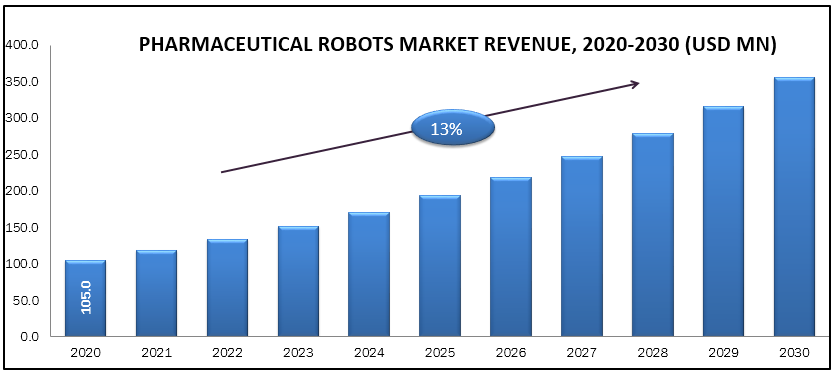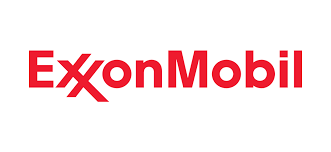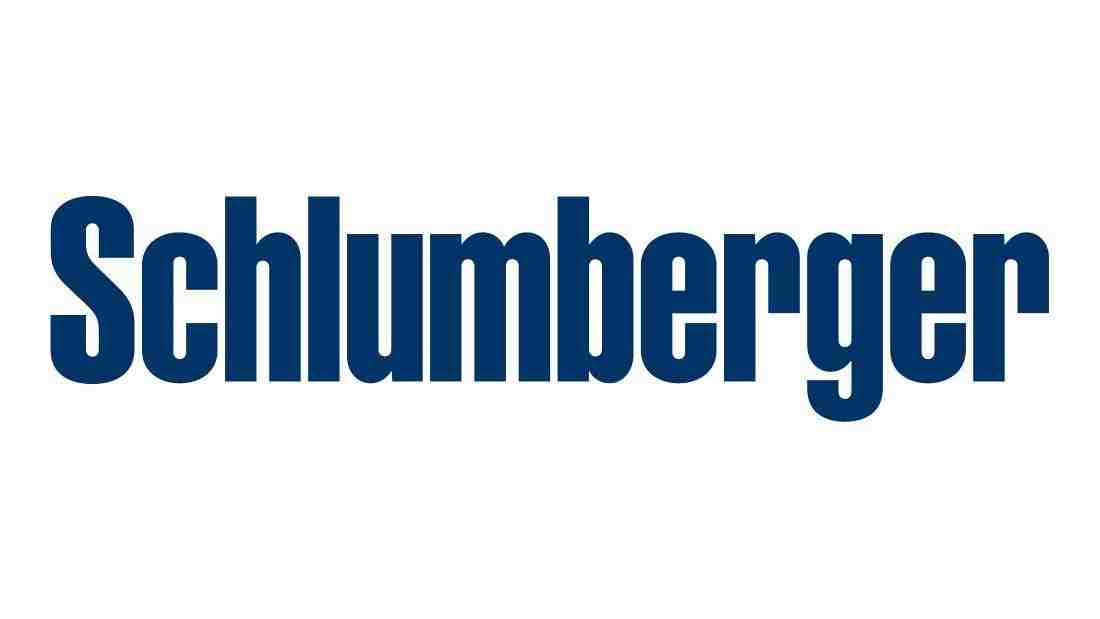Pharmaceutical Robots Market size accounted to USD 104.95 million in 2020 to USD 356.272 million by 2030, at a CAGR of approximately 13.0% during the forecast period.The rapid development of robots along with the collaboration of artificial intelligence is supporting the penetration of advanced robotics in the pharmaceutical industry. The aim is to replace traditional machinery with advanced robots owing to their ability to provide work efficiency and accuracy and the necessity of eliminating human error are some of the factors that are promoting the expansion of the global pharmaceutical robot market. Robotic systems provide various benefits to the pharmaceutical manufacturing industry such as lesser space utilization, reduced production downtime, no labor turnover, enhanced health and safety, better waste management, increased production flexibility, improved production output, product quality, and lower operating costs. The traditional segment is observed to hold a dominant market amongst the two but the collaborative segment occupies major market share during the forecast period on account of easy maintenance as compared to traditional ones.
Market Segmentation:
The global pharmaceutical robots market is segmented by type into traditional robots and collaborative robots. Traditional robots segment is further bifurcated into articulated robots, SCARA robots, delta robots, and Cartesian robots. By application type the market is divided into picking and packaging, laboratory applications, and pharmaceutical drugs inspection. By end-users, the market is categorized into pharmaceutical companies and research laboratories. By geography, the pharmaceutical robots market is classified into North America, Asia Pacific, Europe, and the RoW.
Market Dynamics and Factors:
The kind of benefits offered by robotic systems in pharmaceutical manufacturing units is the major driving factor. However, the lack of skilled personnel to work in automated manufacturing units is restraining the pharmaceutical robots market. Also, increased demand for collaborative robots in manufacturing facilities for various functions will boost the pharmaceutical robots market in the future. Moreover, manufacturing advanced robotic systems that can meet the requirements of consumers in the era of the Industrial Internet of Things (IIoT) is a challenging factor.
Geographic Analysis:
North America is solely a contributor for nearly 34% market share in the primary pharmaceutical packaging category showing good growth, with robots as the primary helping arm. The global pharmaceutical robots market is driven primarily by its widespread reach in the pharmaceutical industry with an intense need for automation in the pharma vertical. A reduction in errors by human intervention is yet another driving factor for the pharmaceutical robots market growth. Adoption of such mechanism leads directly to cost savings in human labor leading to a reduction in production cost, thus driving the growth of the pharmaceutical robots market. Articulated robots hold the majority of market share owing to their capability to check the packed products at the manufacturing plant. Scara has a dominant pharmaceutical robots market share because of the machines in use are relatively cheaper than ones in use in other categories.
Competitive Scenario:
The key players operating in the pharmaceutical robots industry are Fanuc America Corporation, Kawasaki Heavy Industries Ltd., ABB Ltd., Denso Wave Inc., Yaskawa Electric Corporation, Marchesini Group S.p.A, Seiko Epson Corporation, and Universal Robots A/S.
Pharmaceutical Robots Market Report Scope
| Report Attribute | Details |
| Analysis Period | 2020–2030 |
| Base Year | 2021 |
| Forecast Period | 2022–2030 |
| Market Size Estimation | Million (USD) |
| Growth Rate (CAGR%) | 13 % |
|
| By Type (Traditional Robots (Articulated Robots, SCARA Robots, Delta Robots, Cartesian Robots) and Collaborative Robots), By Application (Picking and Packaging, Laboratory Applications, and Pharmaceutical Drugs Inspection), By End Users (Pharmaceutical Companies and Research Laboratories) |
| Geographical Segmentation | North America (U.S., Canada, Mexico) Europe (UK, Germany, Italy, France, Rest of Europe), Asia-Pacific (China, Japan, India, Australia, Rest of APAC), South America (Brazil, Argentina, Rest of SA), MEA (UAE, Saudi Arabia, South Africa) |
| Key Companies Profiled | Fanuc America Corporation, Kawasaki Heavy Industries Ltd., ABB Ltd., Denso Wave Inc., Yaskawa Electric Corporation, Marchesini Group S.p.A, Seiko Epson Corporation, and Universal Robots A/S. |







